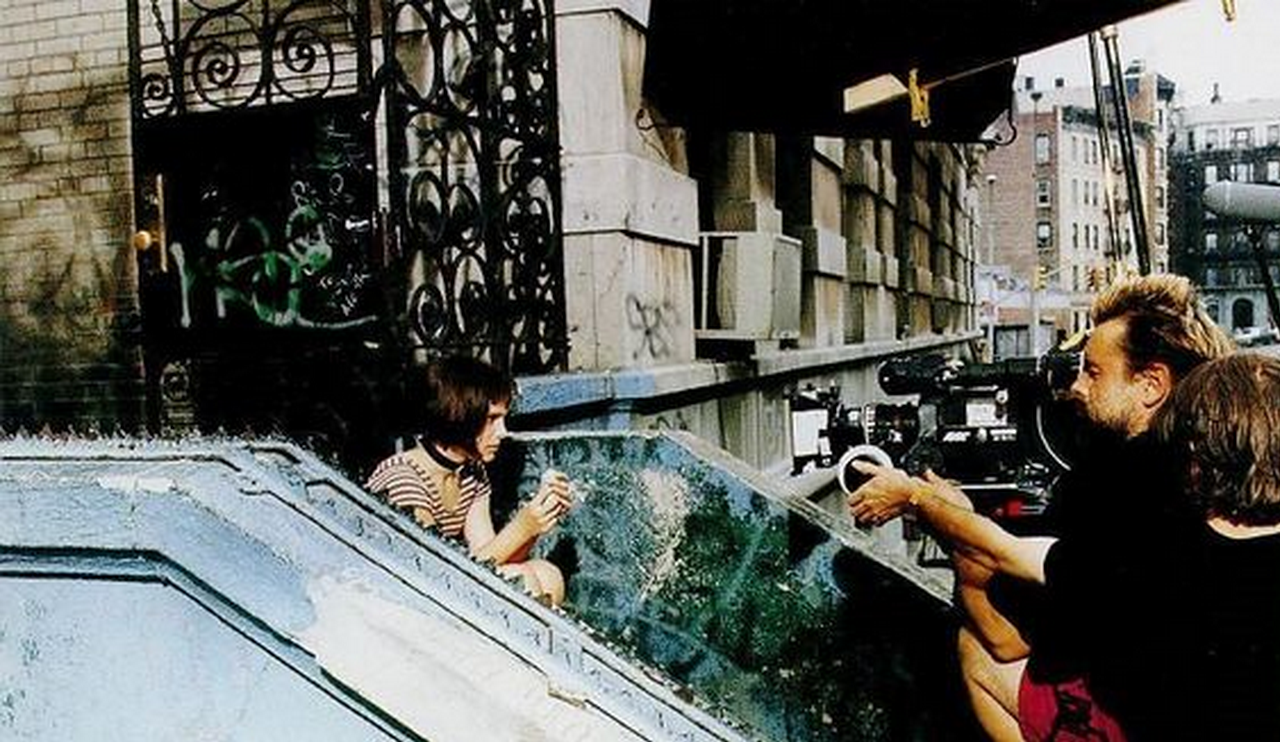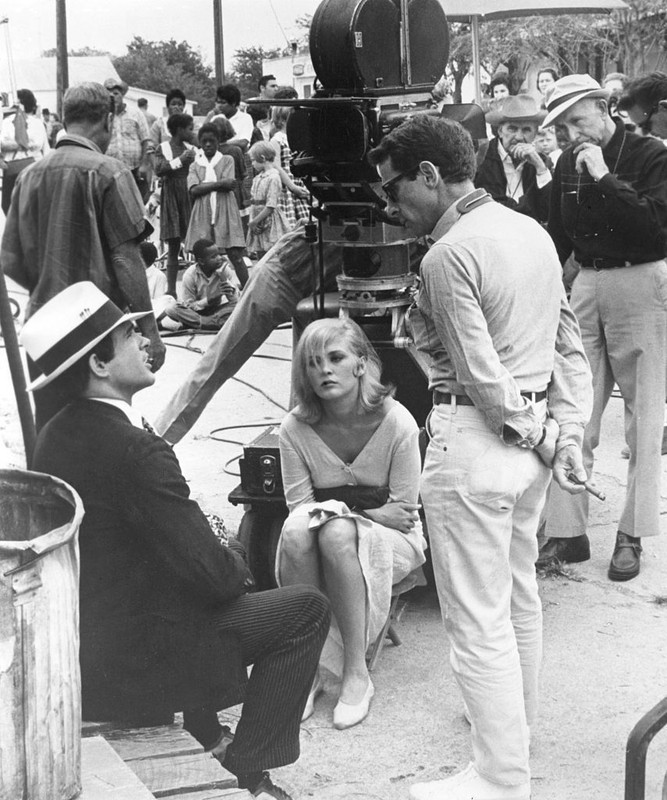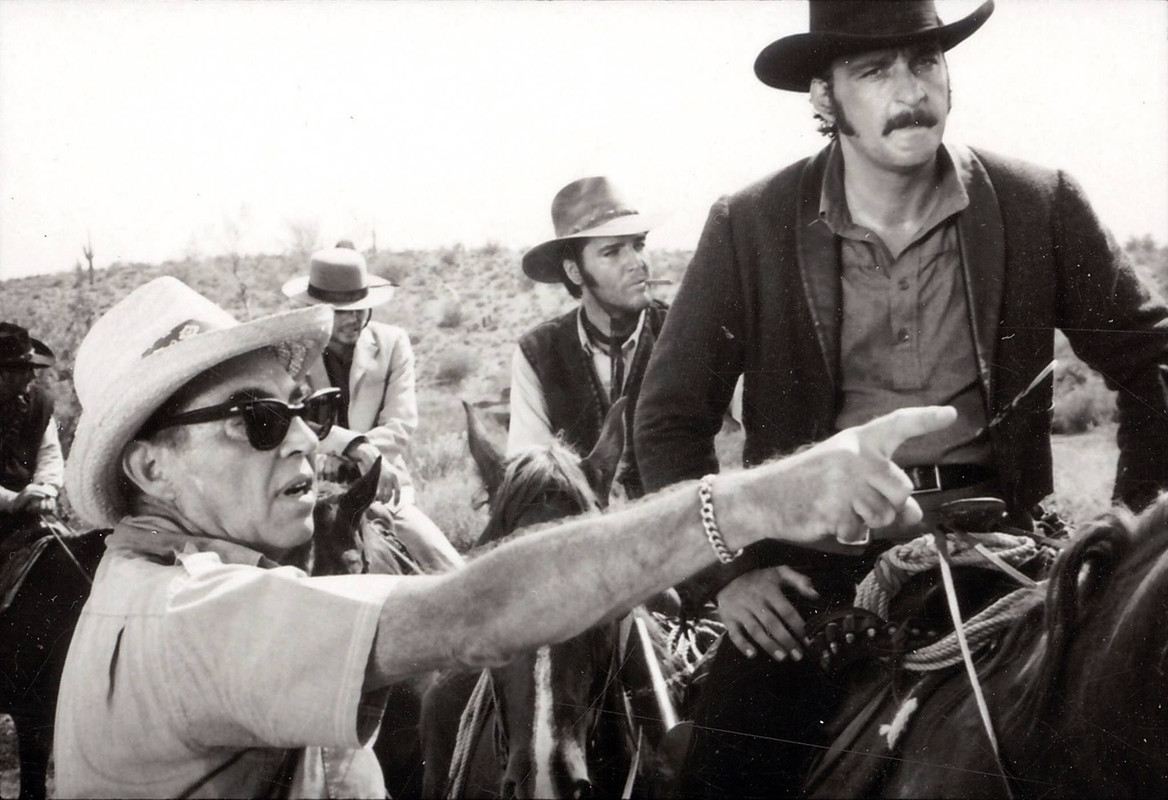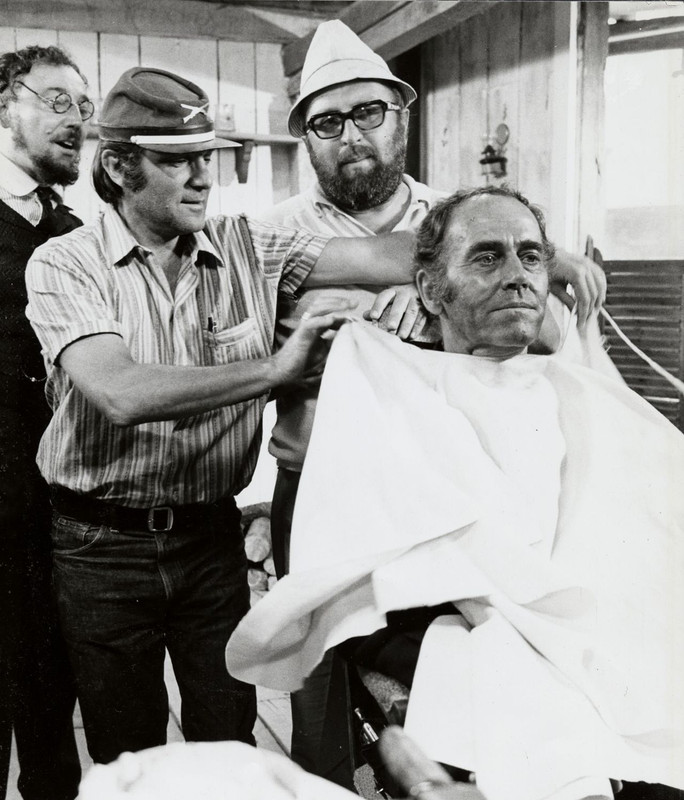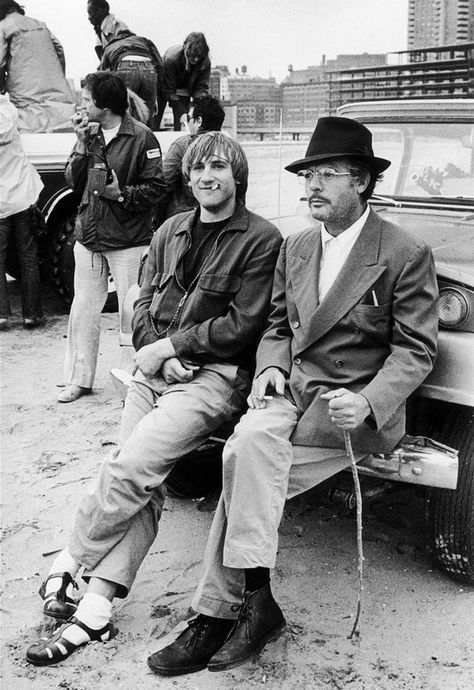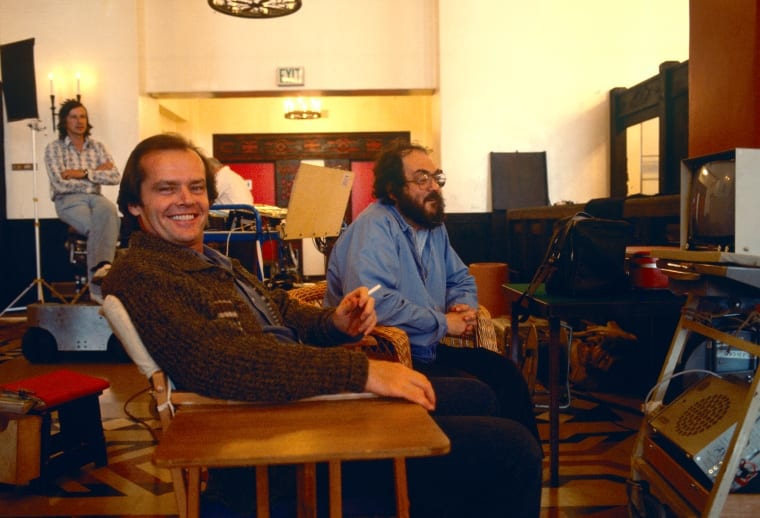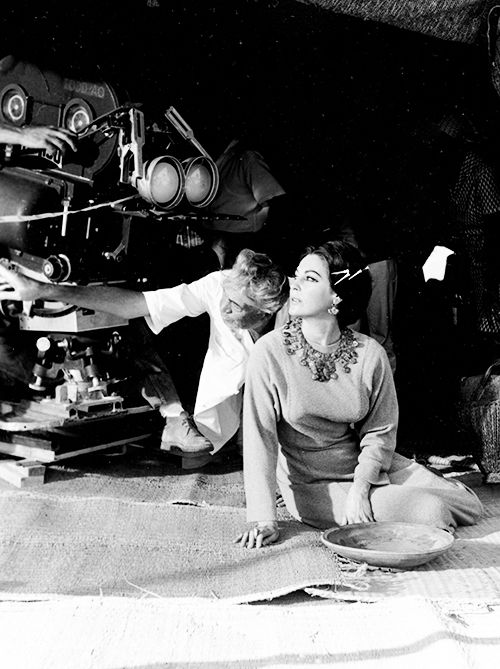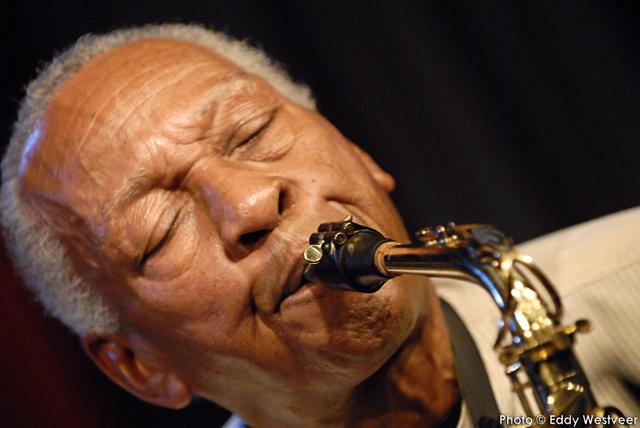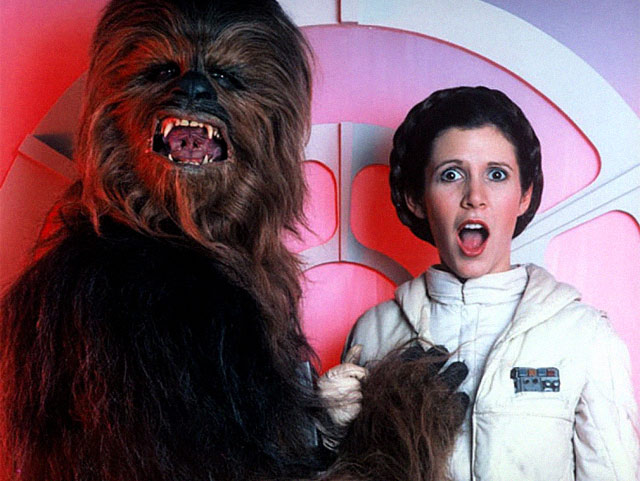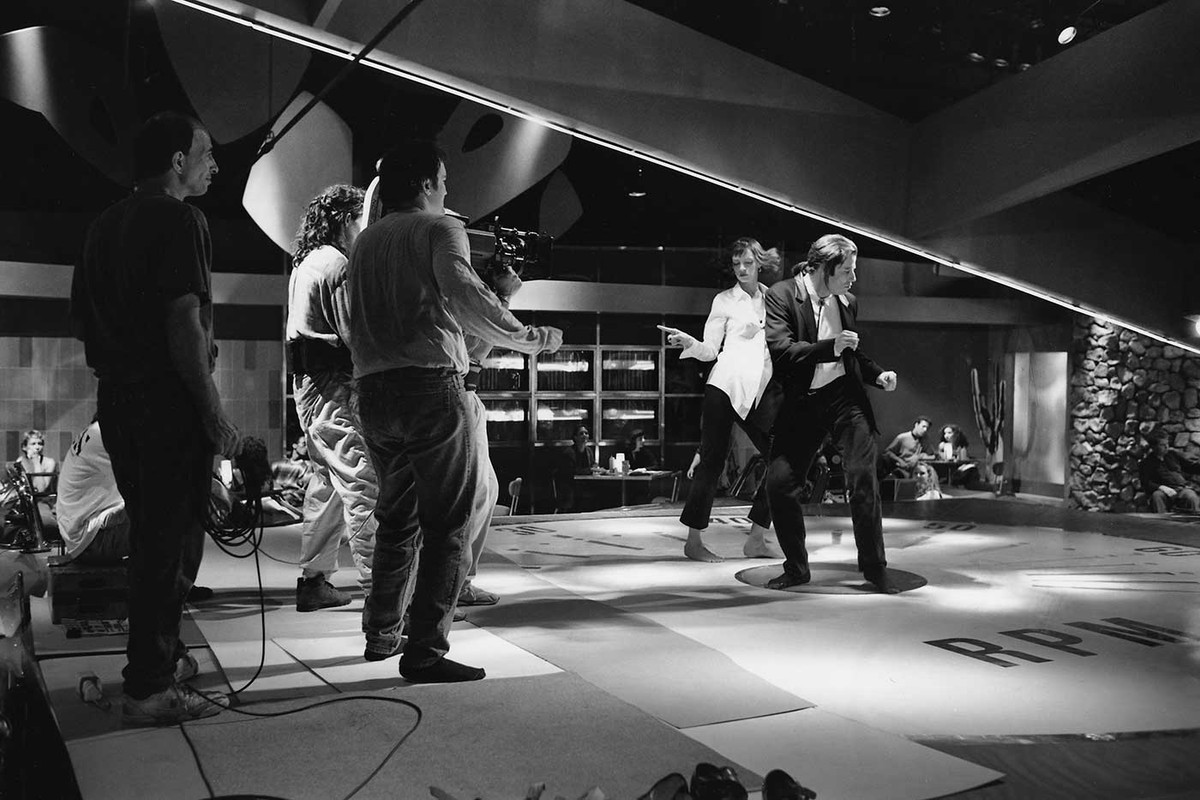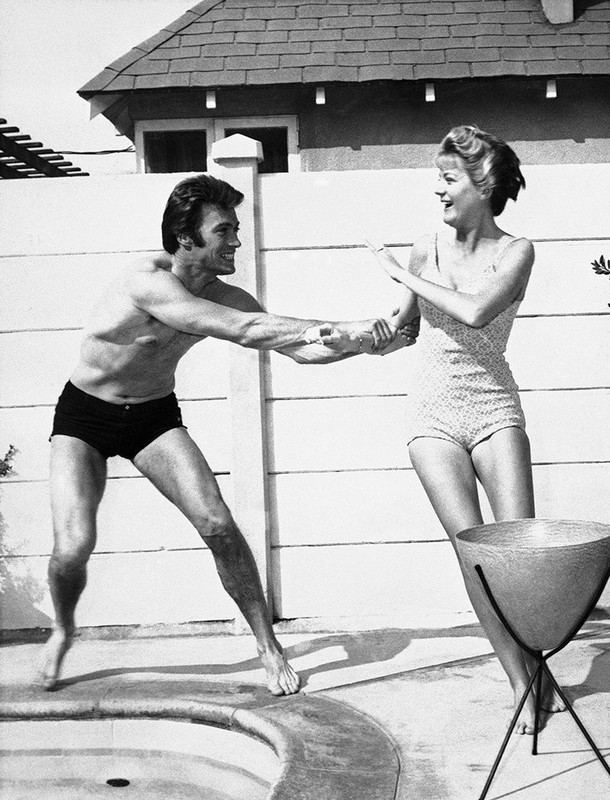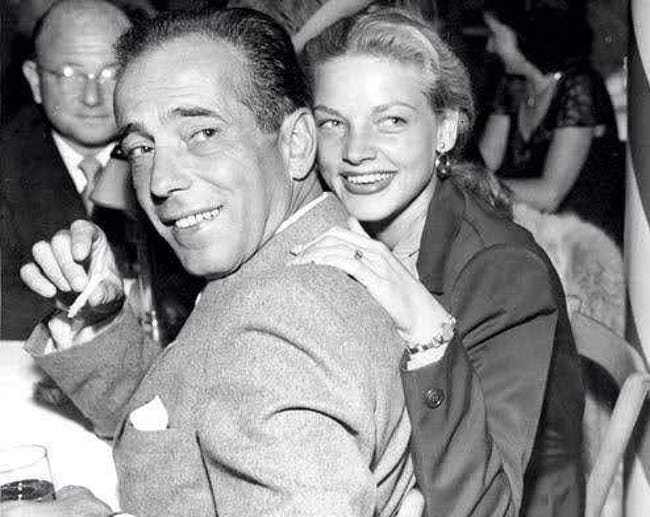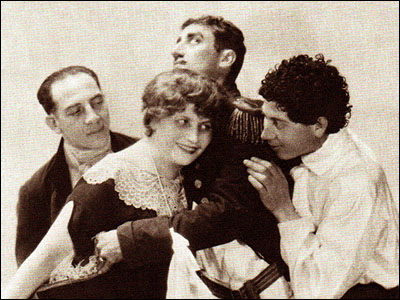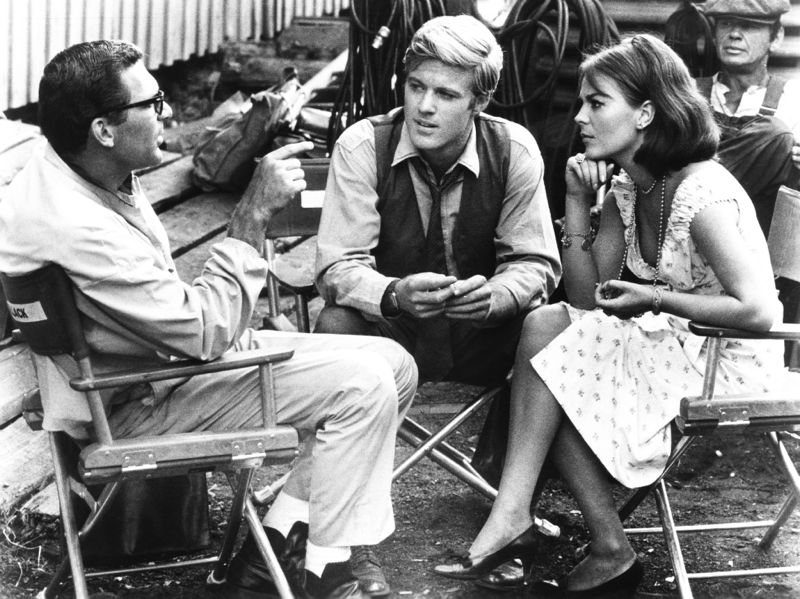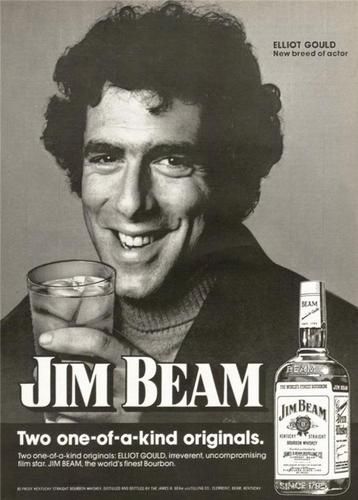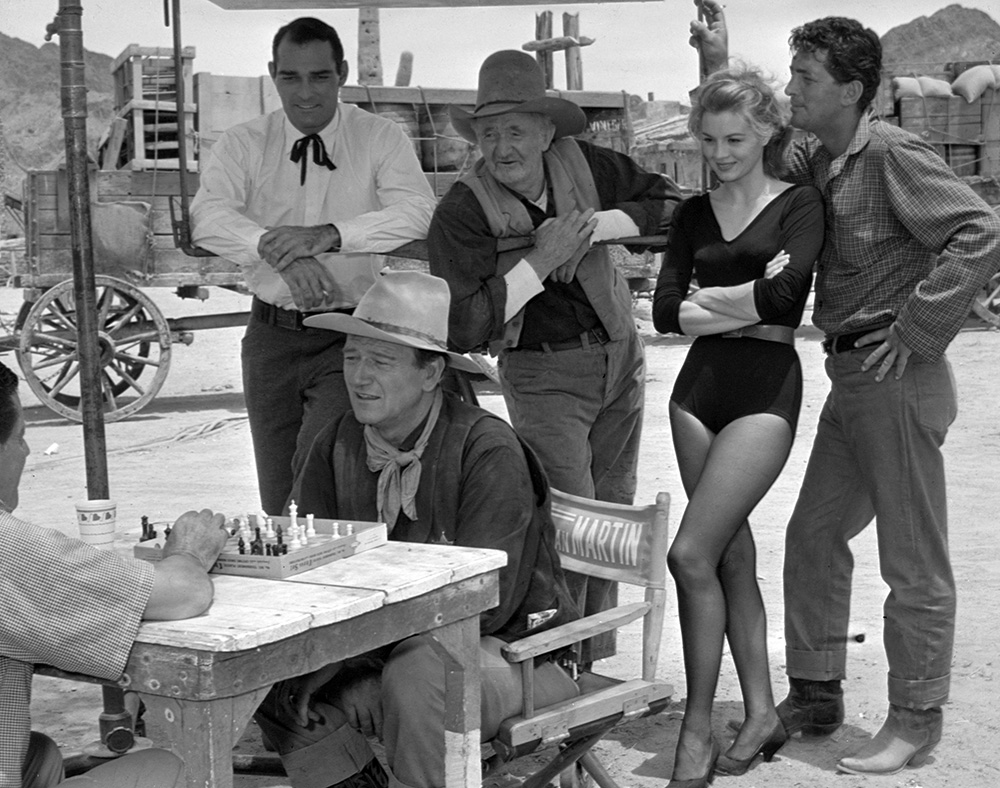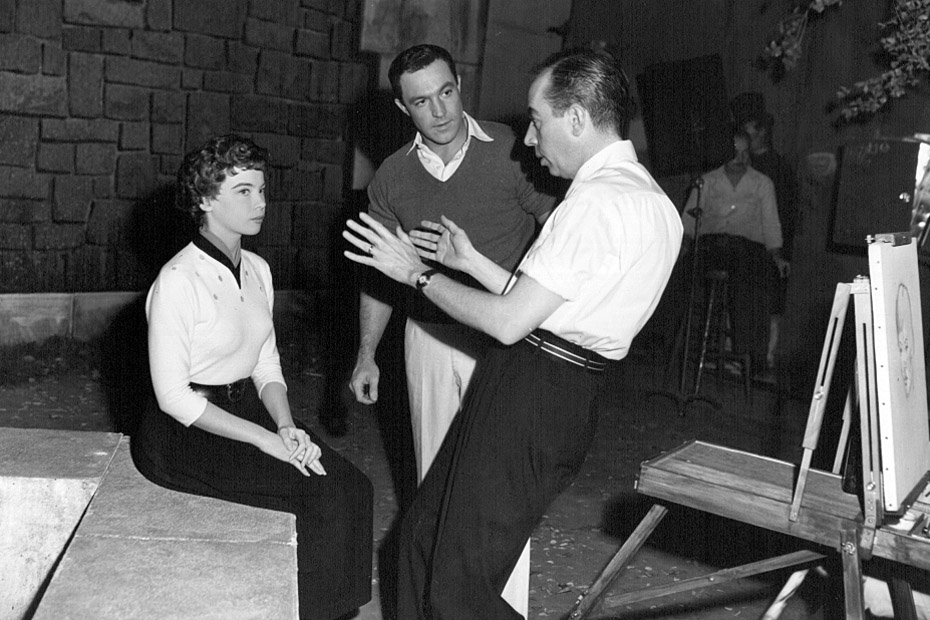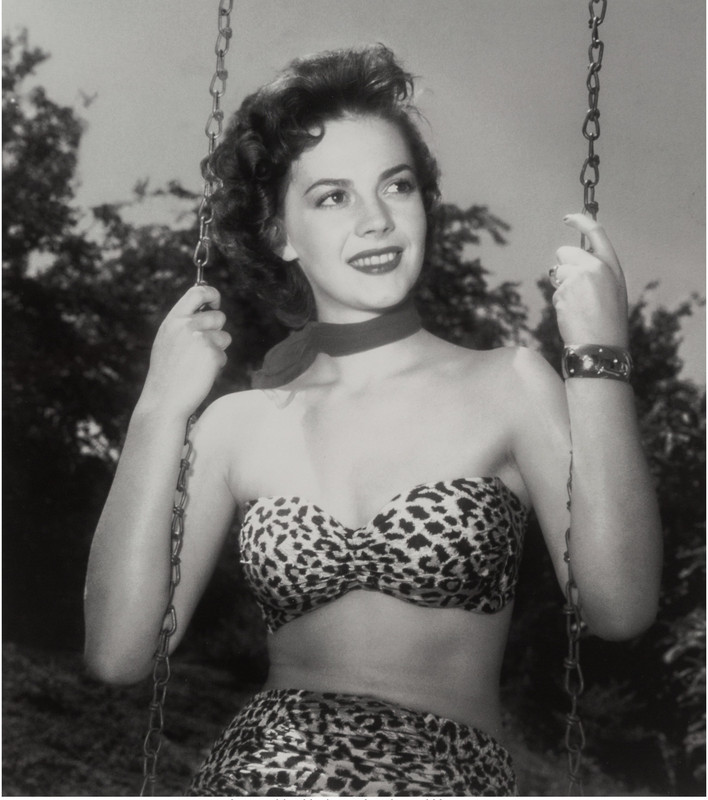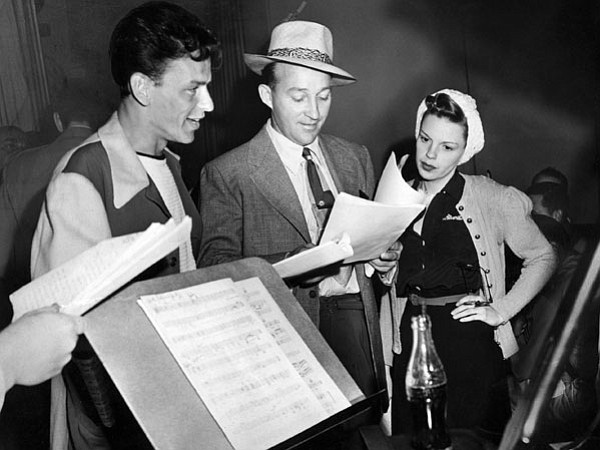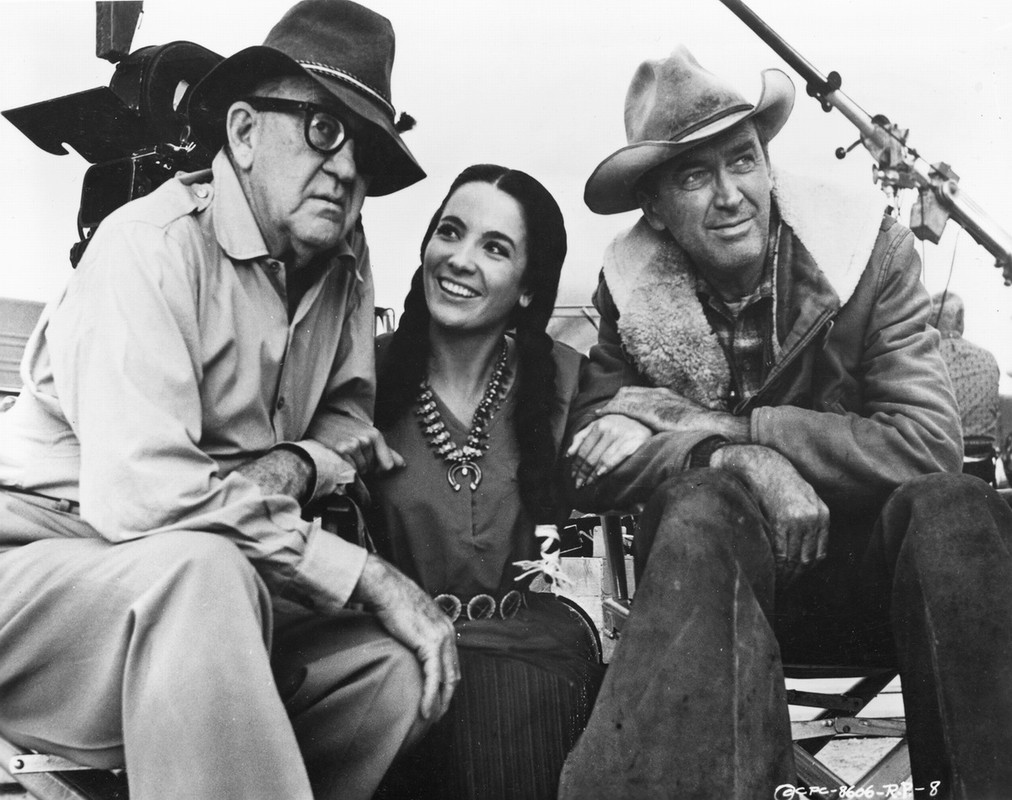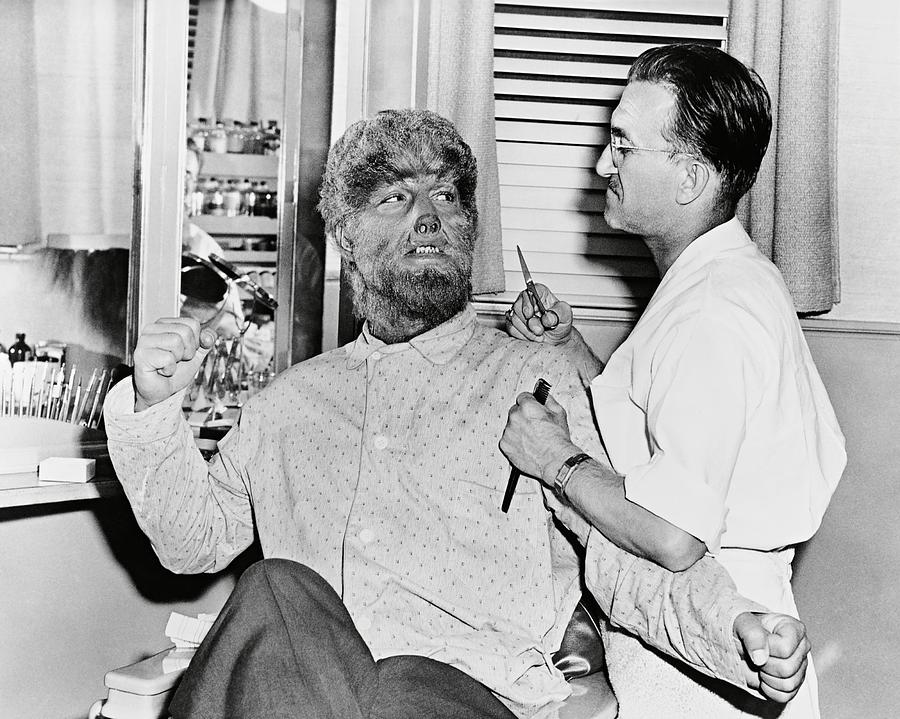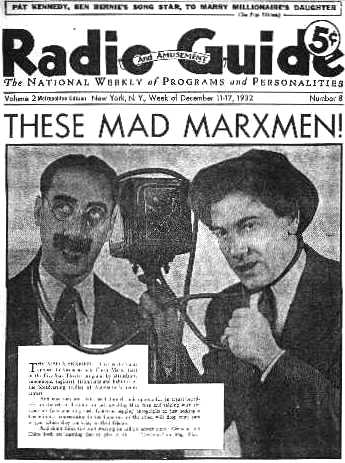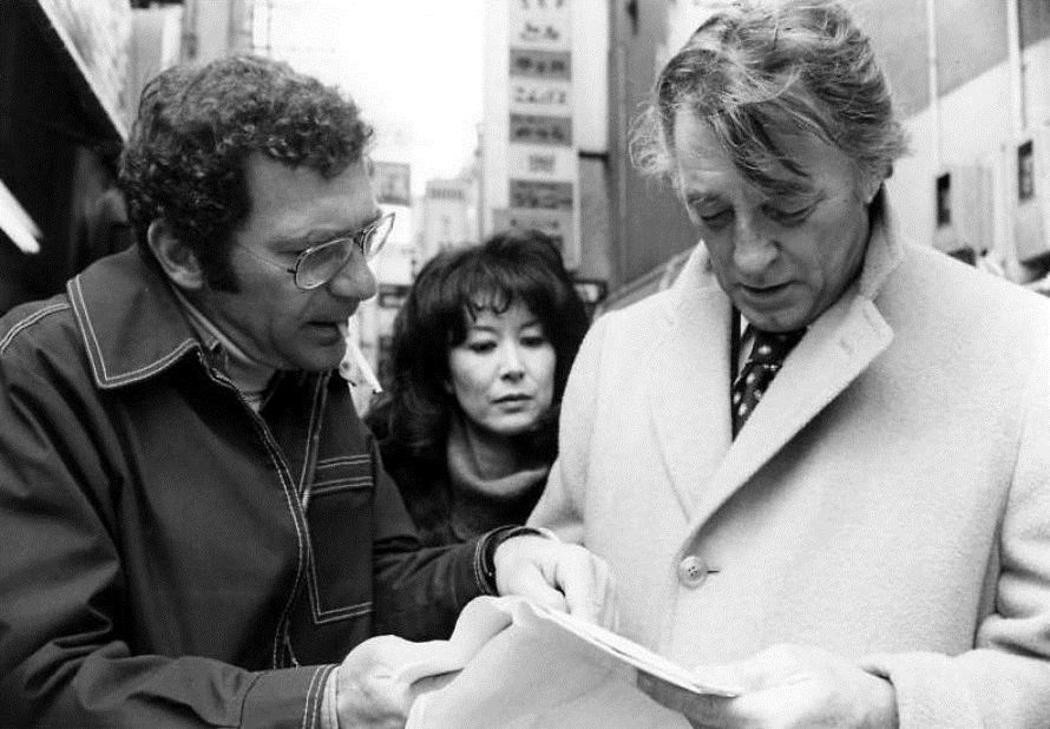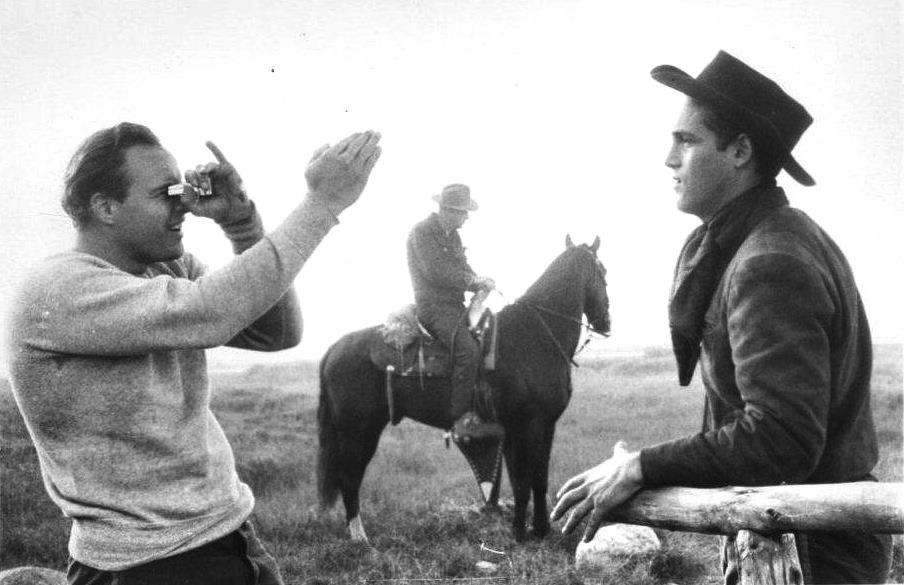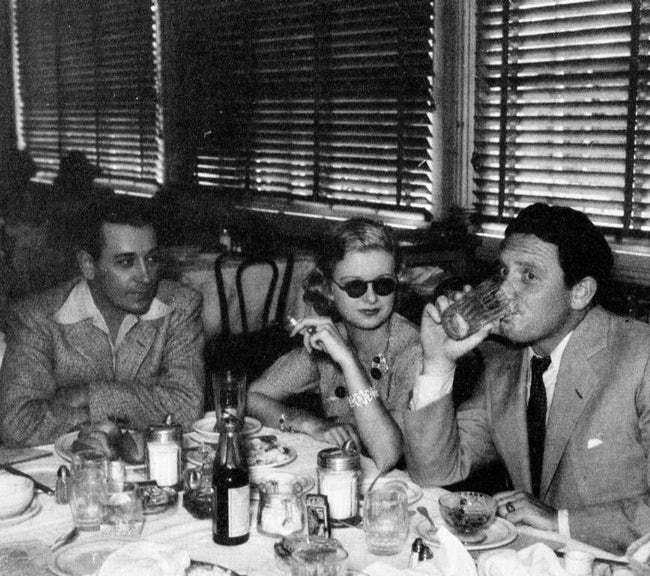Thursday, 28 May 2020
Monday, 25 May 2020
Friday, 22 May 2020
Wednesday, 20 May 2020
Nebula 75 is Go!

Filmmakers decided they wouldn't be thwarted by self-isolation and made a mini episode of a Thunderbirds-style sci-fi show. And it's proved so popular on social media that they are making more!
By Mark Braxton
Radio Times
27 April 2020
The UK lockdown has stymied the producers of many new and existing TV shows. But even in adverse conditions, it seems creativity will find a way. Calling Century 21 Films..!
While more conventional dramas with human casts and huge crews have become a logistical impossibility for all involved, the puppet heroes of Supermarionation hold no risk of catching the coronavirus from each other.
The result is what they cleverly term a “Superisolation” production, called Nebula-75, a short-form puppet drama that follows in the miniature footsteps of 1960s favourites including Fireball XL5, Stingray and Thunderbirds, while at the same time fashioning something entirely new.
Although members of Century 21 Films live around the world, and were able to contribute remotely to pre- and post-production, all the filming for Nebula-75 was done by three people who already live together in a small London flat: director Stephen La Rivière, puppeteer and post-production supervisor Elliot Pavelin and art department head Géraldine Donaldson.
In the best British tradition of make-do-and-mend ingenuity, their living room was turned into a movie studio, with bookshelves, cardboard boxes and other household objects becoming the inside of the show’s eponymous spacecraft!
The flat was already home to many of the puppets, props and costumes that they had accumulated from previous projects, and, as a short behind-the-scenes film after the episode reveals, the model for the spaceship was built in Preston, then sent to London.
Director Stephen La Rivière explains, “We’ve been making Supermarionation productions of different kinds for several years now – including three brand-new episodes of Thunderbirds in 2015 and a guest spot on Endeavour last year. We’ve wanted to make a new, original Supermarionation series for some time and there’s been much work behind the scenes towards that goal – which the current lockdown situation has partly derailed.”
But, he adds, “Rather than sit around moping, we decided we’d have a go at making something brand-new – but from our tiny living room. We decided to see if we could construct a series based around the limited space, settings and money available to us. The result is Nebula-75.”
The theme of Nebula-75 taps into the current Government restrictions. The hero, Commander Neptune, finds himself in his own “lockdown” – inside a spaceship travelling the distant reaches of the cosmos…

Puppeteer and post-production supervisor Elliot Pavelin with the puppet of Commander Neptune
On previous productions they’ve had a full studio to work in, where they operate the puppets from a bridge six feet above the set. Elliot Pavelin says, “The ceiling in our flat doesn’t quite allow for this! Instead, we operated from the ground by leaning over the set walls. Getting the puppets into the right part of the set, performing with them and avoiding tripping over furniture and equipment when crammed into the living room was quite difficult!”
The episode (which you can watch below) made its debut on Facebook and YouTube on Saturday, with instant feedback indicating the company had a lockdown hit on their hands. “Bravo!” said one fan; “A glorious continuation of #Supermarionation,” said another. One enthusiast even mocked up a page from a Nebula-75 annual, done in the style of a 1960s children’s book.
It’s fair to say that the outpouring of praise was a shock to Stephen. “We’re very aware of the limitations we’re faced with and I very seriously considered not releasing it at all. But as each bit fell into place I thought, ‘Oh. This isn’t so bad – we’ll put it out anyway.’ So the reaction has caught me completely by surprise! Not that there’s not an audience that wants to see more Supermarionation. I’ve always known that!”
The plaudits gave them heart to continue with the series. In fact, they’re hoping to start shooting episode two this week. “It took us four days to film episode one… episode two is a bit more complicated. But we’d like to try and get something together within a couple of weeks. We’ll shoot episode three at the same time.”
Adds Géraldine Donaldson, “We’ve got lots of ideas for future episodes. Our imaginations are unlimited, even if the same can’t be said for the space in the living room!”

Stephen La Rivière demonstrates the flat-based puppetry that was necessary for Nebula-75. He wrote the episode with producer Andrew T Smith
While made on the tightest of budgets, Nebula-75 fits neatly into the style and themes of puppet shows popularised in the 1960s by husband-and-wife team Gerry and Sylvia Anderson, in a universe of old-fashioned heroism against a backdrop of race-against-time action and humour.
With the announcement that from 7th May, BritBox will be adding episodes of some of those series including Thunderbirds, Captain Scarlet and Stingray, and Century 21 Films rolling out new product for both the older and next generation of puppet fans, an exciting new era is dawning.
27 April 2020
The UK lockdown has stymied the producers of many new and existing TV shows. But even in adverse conditions, it seems creativity will find a way. Calling Century 21 Films..!
While more conventional dramas with human casts and huge crews have become a logistical impossibility for all involved, the puppet heroes of Supermarionation hold no risk of catching the coronavirus from each other.
The result is what they cleverly term a “Superisolation” production, called Nebula-75, a short-form puppet drama that follows in the miniature footsteps of 1960s favourites including Fireball XL5, Stingray and Thunderbirds, while at the same time fashioning something entirely new.
Although members of Century 21 Films live around the world, and were able to contribute remotely to pre- and post-production, all the filming for Nebula-75 was done by three people who already live together in a small London flat: director Stephen La Rivière, puppeteer and post-production supervisor Elliot Pavelin and art department head Géraldine Donaldson.
In the best British tradition of make-do-and-mend ingenuity, their living room was turned into a movie studio, with bookshelves, cardboard boxes and other household objects becoming the inside of the show’s eponymous spacecraft!
The flat was already home to many of the puppets, props and costumes that they had accumulated from previous projects, and, as a short behind-the-scenes film after the episode reveals, the model for the spaceship was built in Preston, then sent to London.
Director Stephen La Rivière explains, “We’ve been making Supermarionation productions of different kinds for several years now – including three brand-new episodes of Thunderbirds in 2015 and a guest spot on Endeavour last year. We’ve wanted to make a new, original Supermarionation series for some time and there’s been much work behind the scenes towards that goal – which the current lockdown situation has partly derailed.”
But, he adds, “Rather than sit around moping, we decided we’d have a go at making something brand-new – but from our tiny living room. We decided to see if we could construct a series based around the limited space, settings and money available to us. The result is Nebula-75.”
The theme of Nebula-75 taps into the current Government restrictions. The hero, Commander Neptune, finds himself in his own “lockdown” – inside a spaceship travelling the distant reaches of the cosmos…

Puppeteer and post-production supervisor Elliot Pavelin with the puppet of Commander Neptune
On previous productions they’ve had a full studio to work in, where they operate the puppets from a bridge six feet above the set. Elliot Pavelin says, “The ceiling in our flat doesn’t quite allow for this! Instead, we operated from the ground by leaning over the set walls. Getting the puppets into the right part of the set, performing with them and avoiding tripping over furniture and equipment when crammed into the living room was quite difficult!”
The episode (which you can watch below) made its debut on Facebook and YouTube on Saturday, with instant feedback indicating the company had a lockdown hit on their hands. “Bravo!” said one fan; “A glorious continuation of #Supermarionation,” said another. One enthusiast even mocked up a page from a Nebula-75 annual, done in the style of a 1960s children’s book.
It’s fair to say that the outpouring of praise was a shock to Stephen. “We’re very aware of the limitations we’re faced with and I very seriously considered not releasing it at all. But as each bit fell into place I thought, ‘Oh. This isn’t so bad – we’ll put it out anyway.’ So the reaction has caught me completely by surprise! Not that there’s not an audience that wants to see more Supermarionation. I’ve always known that!”
The plaudits gave them heart to continue with the series. In fact, they’re hoping to start shooting episode two this week. “It took us four days to film episode one… episode two is a bit more complicated. But we’d like to try and get something together within a couple of weeks. We’ll shoot episode three at the same time.”
Adds Géraldine Donaldson, “We’ve got lots of ideas for future episodes. Our imaginations are unlimited, even if the same can’t be said for the space in the living room!”

Stephen La Rivière demonstrates the flat-based puppetry that was necessary for Nebula-75. He wrote the episode with producer Andrew T Smith
While made on the tightest of budgets, Nebula-75 fits neatly into the style and themes of puppet shows popularised in the 1960s by husband-and-wife team Gerry and Sylvia Anderson, in a universe of old-fashioned heroism against a backdrop of race-against-time action and humour.
With the announcement that from 7th May, BritBox will be adding episodes of some of those series including Thunderbirds, Captain Scarlet and Stingray, and Century 21 Films rolling out new product for both the older and next generation of puppet fans, an exciting new era is dawning.
Sunday, 17 May 2020
Sound of Redemption: The Frank Morgan Story
Review: ‘Sound of Redemption’ Traces Frank Morgan’s Route From Jazz Musician to Prisoner and Back
Sound of Redemption: The Frank Morgan StoryDirected by N.C. HeikinDocumentary, Biography, Drama, Music1h 24m
By Ken Jaworowski
The New York Times
1 December 2015
1 December 2015
In the 1950s, some jazz musicians believed they couldn’t get that Charlie Parker “happy-sad feeling without using drugs.” So says a friend of the saxophonist Frank Morgan in “Sound of Redemption,” a documentary that revels in the happy despite some seriously sad events.
Mr. Morgan was born into music. His father was a professional musician who used to play his guitar while pressing it against the belly of his pregnant wife, and later played by his son’s crib. Mr. Morgan was an accomplished saxophonist by the time he was a teenager; it’s said that when he performed with Billie Holiday, his music made her cry.
His renown grew, as did an addiction to heroin. His drug habit was soon financed by crime, and for some 30 years he was in and out of prison. After his last stint, he was released and went on to record some of his finest work.
The film, directed by N.C. Heikin, traces Mr. Morgan’s career with beautiful black-and-white photographs and newsreels. Those scenes are intertwined with segments from a 2012 tribute concert at San Quentin prison in California, five years after his death.
“Sound of Redemption,” subtitled “The Frank Morgan Story,” isn’t a hard-hitting exploration. Though Mr. Morgan’s grittier side is outlined, it’s not deeply investigated. (When a former wife says that the only way to love Frank Morgan was to “live in a state of exasperation,” you long to hear more about their marriage, and his demons.) Instead, it’s a fond and forgiving tribute to the man, filled with music that moves beyond happy and sad, and toward something like brilliance.
Mr. Morgan was born into music. His father was a professional musician who used to play his guitar while pressing it against the belly of his pregnant wife, and later played by his son’s crib. Mr. Morgan was an accomplished saxophonist by the time he was a teenager; it’s said that when he performed with Billie Holiday, his music made her cry.
His renown grew, as did an addiction to heroin. His drug habit was soon financed by crime, and for some 30 years he was in and out of prison. After his last stint, he was released and went on to record some of his finest work.
The film, directed by N.C. Heikin, traces Mr. Morgan’s career with beautiful black-and-white photographs and newsreels. Those scenes are intertwined with segments from a 2012 tribute concert at San Quentin prison in California, five years after his death.
“Sound of Redemption,” subtitled “The Frank Morgan Story,” isn’t a hard-hitting exploration. Though Mr. Morgan’s grittier side is outlined, it’s not deeply investigated. (When a former wife says that the only way to love Frank Morgan was to “live in a state of exasperation,” you long to hear more about their marriage, and his demons.) Instead, it’s a fond and forgiving tribute to the man, filled with music that moves beyond happy and sad, and toward something like brilliance.
Thursday, 14 May 2020
Tuesday, 12 May 2020
Little Richard RIP
Little Richard, Flamboyant Wild Man of Rock ’n’ Roll, Dies at 87
Delving deeply into the wellsprings of gospel music and the blues, and screaming as if for his very life, he created something new, thrilling and dangerous.Tim Weiner
The New York Times
9 May 2020
Richard Penniman, better known as Little Richard, who combined the sacred shouts of the black church and the profane sounds of the blues to create some of the world’s first and most influential rock ’n’ roll records, died on Saturday in Tullahoma, Tenn. He was 87.
His lawyer, Bill Sobel, said the cause was bone cancer.
Little Richard did not invent rock ’n’ roll. Other musicians had already been mining a similar vein by the time he recorded his first hit, “Tutti Frutti” — a raucous song about sex, its lyrics cleaned up but its meaning hard to miss — in a New Orleans recording studio in September 1955. Chuck Berry and Fats Domino had reached the pop Top 10, Bo Diddley had topped the rhythm-and-blues charts, and Elvis Presley had been making records for a year.
But Little Richard, delving deeply into the wellsprings of gospel music and the blues, pounding the piano furiously and screaming as if for his very life, raised the energy level several notches and created something not quite like any music that had been heard before — something new, thrilling and more than a little dangerous. As the rock historian Richie Unterberger put it, “He was crucial in upping the voltage from high-powered R&B into the similar, yet different, guise of rock ’n’ roll.”
Art Rupe of Specialty Records, the label for which he recorded his biggest hits, called Little Richard “dynamic, completely uninhibited, unpredictable, wild.”
“Tutti Frutti” rocketed up the charts and was quickly followed by “Long Tall Sally” and other records now acknowledged as classics. His live performances were electrifying.
“He’d just burst onto the stage from anywhere, and you wouldn’t be able to hear anything but the roar of the audience,” the record producer and arranger H.B. Barnum, who played saxophone with Little Richard early in his career, recalled in “The Life and Times of Little Richard” (1984), an authorized biography by Charles White. “He’d be on the stage, he’d be off the stage, he’d be jumping and yelling, screaming, whipping the audience on.”
Rock ’n’ roll was an unabashedly macho music in its early days, but Little Richard, who had performed in drag as a teenager, presented a very different picture onstage: gaudily dressed, his hair piled six inches high, his face aglow with cinematic makeup. He was fond of saying in later years that if Elvis was the king of rock ’n’ roll, he was the queen. Offstage, he characterized himself variously as gay, bisexual and “omnisexual.”
A Showman With Influence
His influence as a performer was immeasurable. It could be seen and heard in the flamboyant showmanship of James Brown, who idolized him (and used some of his musicians when Little Richard began a long hiatus from performing in 1957), and of Prince, whose ambisexual image owed a major debt to his.
Presley recorded his songs. The Beatles adopted his trademark sound, an octave-leaping exultation: “Woooo!” (Paul McCartney said that the first song he ever sang in public was “Long Tall Sally,” which he later recorded with the Beatles.) Bob Dylan wrote in his high school yearbook that his ambition was “to join Little Richard.”
Little Richard’s impact was social as well.
“I’ve always thought that rock ’n’ roll brought the races together,” Mr. White quoted him as saying. “Especially being from the South, where you see the barriers, having all these people who we thought hated us showing all this love.”
Mr. Barnum told Mr. White that “they still had the audiences segregated” at concerts in the South in those days, but that when Little Richard performed, “most times, before the end of the night, they would all be mixed together.”
9 May 2020
Richard Penniman, better known as Little Richard, who combined the sacred shouts of the black church and the profane sounds of the blues to create some of the world’s first and most influential rock ’n’ roll records, died on Saturday in Tullahoma, Tenn. He was 87.
His lawyer, Bill Sobel, said the cause was bone cancer.
Little Richard did not invent rock ’n’ roll. Other musicians had already been mining a similar vein by the time he recorded his first hit, “Tutti Frutti” — a raucous song about sex, its lyrics cleaned up but its meaning hard to miss — in a New Orleans recording studio in September 1955. Chuck Berry and Fats Domino had reached the pop Top 10, Bo Diddley had topped the rhythm-and-blues charts, and Elvis Presley had been making records for a year.
But Little Richard, delving deeply into the wellsprings of gospel music and the blues, pounding the piano furiously and screaming as if for his very life, raised the energy level several notches and created something not quite like any music that had been heard before — something new, thrilling and more than a little dangerous. As the rock historian Richie Unterberger put it, “He was crucial in upping the voltage from high-powered R&B into the similar, yet different, guise of rock ’n’ roll.”
Art Rupe of Specialty Records, the label for which he recorded his biggest hits, called Little Richard “dynamic, completely uninhibited, unpredictable, wild.”
“Tutti Frutti” rocketed up the charts and was quickly followed by “Long Tall Sally” and other records now acknowledged as classics. His live performances were electrifying.
“He’d just burst onto the stage from anywhere, and you wouldn’t be able to hear anything but the roar of the audience,” the record producer and arranger H.B. Barnum, who played saxophone with Little Richard early in his career, recalled in “The Life and Times of Little Richard” (1984), an authorized biography by Charles White. “He’d be on the stage, he’d be off the stage, he’d be jumping and yelling, screaming, whipping the audience on.”
Rock ’n’ roll was an unabashedly macho music in its early days, but Little Richard, who had performed in drag as a teenager, presented a very different picture onstage: gaudily dressed, his hair piled six inches high, his face aglow with cinematic makeup. He was fond of saying in later years that if Elvis was the king of rock ’n’ roll, he was the queen. Offstage, he characterized himself variously as gay, bisexual and “omnisexual.”
A Showman With Influence
His influence as a performer was immeasurable. It could be seen and heard in the flamboyant showmanship of James Brown, who idolized him (and used some of his musicians when Little Richard began a long hiatus from performing in 1957), and of Prince, whose ambisexual image owed a major debt to his.
Presley recorded his songs. The Beatles adopted his trademark sound, an octave-leaping exultation: “Woooo!” (Paul McCartney said that the first song he ever sang in public was “Long Tall Sally,” which he later recorded with the Beatles.) Bob Dylan wrote in his high school yearbook that his ambition was “to join Little Richard.”
Little Richard’s impact was social as well.
“I’ve always thought that rock ’n’ roll brought the races together,” Mr. White quoted him as saying. “Especially being from the South, where you see the barriers, having all these people who we thought hated us showing all this love.”
Mr. Barnum told Mr. White that “they still had the audiences segregated” at concerts in the South in those days, but that when Little Richard performed, “most times, before the end of the night, they would all be mixed together.”
Look at those white kids getting it on...
If uniting black and white audiences was a point of pride for Little Richard, it was a cause of concern for others, especially in the South. The White Citizens Council of North Alabama issued a denunciation of rock ’n’ roll largely because it brought “people of both races together.” And with many radio stations under pressure to keep black music off the air, Pat Boone’s cleaned-up, toned-down version of “Tutti Frutti” was a bigger hit than Little Richard’s original. (He also had a hit with “Long Tall Sally.”)
Still, it seemed that nothing could stop Little Richard’s drive to the top — until he stopped it himself.
He was at the height of his fame when he left the United States in late September 1957 to begin a tour in Australia. As he told the story, he was exhausted, under intense pressure from the Internal Revenue Service and furious at the low royalty rate he was receiving from Specialty. Without anyone to advise him, he had signed a contract that gave him half a cent for every record he sold. “Tutti Frutti” had sold half a million copies but had netted him only $25,000.
If uniting black and white audiences was a point of pride for Little Richard, it was a cause of concern for others, especially in the South. The White Citizens Council of North Alabama issued a denunciation of rock ’n’ roll largely because it brought “people of both races together.” And with many radio stations under pressure to keep black music off the air, Pat Boone’s cleaned-up, toned-down version of “Tutti Frutti” was a bigger hit than Little Richard’s original. (He also had a hit with “Long Tall Sally.”)
Still, it seemed that nothing could stop Little Richard’s drive to the top — until he stopped it himself.
He was at the height of his fame when he left the United States in late September 1957 to begin a tour in Australia. As he told the story, he was exhausted, under intense pressure from the Internal Revenue Service and furious at the low royalty rate he was receiving from Specialty. Without anyone to advise him, he had signed a contract that gave him half a cent for every record he sold. “Tutti Frutti” had sold half a million copies but had netted him only $25,000.
One night in early October, before 40,000 fans at an outdoor arena in Sydney, he had an epiphany.
“That night Russia sent off that very first Sputnik,” he told Mr. White, referring to the first satellite sent into space. “It looked as though the big ball of fire came directly over the stadium about two or three hundred feet above our heads. It shook my mind. It really shook my mind. I got up from the piano and said, ‘This is it. I am through. I am leaving show business to go back to God.’”
He had one last Top 10 hit: “Good Golly Miss Molly,” recorded in 1956 but not released until early 1958. By then, he had left rock ’n’ roll behind.
He became a traveling evangelist. He entered Oakwood College (now Oakwood University) in Huntsville, Ala., a Seventh-day Adventist school, to study for the ministry. He cut his hair, got married and began recording gospel music.
For the rest of his life, he would be torn between the gravity of the pulpit and the pull of the stage.
“Although I sing rock ’n’ roll, God still loves me,” he said in 2009. “I’m a rock ’n’ roll singer, but I’m still a Christian.”
He was lured back to the stage in 1962, and over the next two years he played to wild acclaim in England, Germany and France. Among his opening acts were the Beatles and the Rolling Stones, then at the start of their careers.
He went on to tour relentlessly in the United States, with a band that at one time included Jimi Hendrix on guitar. By the end of the 1960s, sold-out performances in Las Vegas and triumphant appearances at rock festivals in Atlantic City and Toronto were sending a clear message: Little Richard was back to stay.
But he wasn’t.
‘I Lost My Reasoning’
By his own account, alcohol and cocaine began to sap his soul (“I lost my reasoning,” he would later say), and in 1977, he once again turned from rock ’n’ roll to God. He became a Bible salesman, began recording religious songs again and, for the second time, disappeared from the spotlight.
He did not stay away forever. The publication of his biography in 1984 signaled his return to the public eye, and he began performing again.
By now, he was as much a personality as a musician. In 1986 he played a prominent role as a record producer in Paul Mazursky’s hit movie “Down and Out in Beverly Hills.” On television, he appeared on talk, variety, comedy and awards shows. He officiated at celebrity weddings and preached at celebrity funerals.
He could still raise the roof in concert. In December 1992, he stole the show at a rock ’n’ roll revival concert at Wembley Arena in London. “I’m 60 years old today,” he told the audience, “and I still look remarkable.”
He continued to look remarkable — with the help of wigs and thick pancake makeup — as he toured intermittently into the 21st century. But age eventually took its toll.
By 2007, he was walking onstage with the aid of two canes. In 2012, he abruptly ended a performance at the Howard Theater in Washington, telling the crowd, “I can’t hardly breathe.” A year later, he told Rolling Stone magazine that he was retiring.
“I am done, in a sense,” he said. “I don’t feel like doing anything right now.”
Survivors include a son, Danny Jones Penniman. Complete information on survivors was not immediately available.
Richard Wayne Penniman was born in Macon, Ga., on Dec. 5, 1932, the third of 12 children of Charles and Leva Mae (Stewart) Penniman. His father was a brick mason who sold moonshine on the side. An uncle, a cousin and a grandfather were preachers, and as a boy Richard attended Seventh-day Adventist, Baptist and Holiness churches and aspired to be a singing evangelist. An early influence was the gospel singer and guitarist Sister Rosetta Tharpe, one of the first performers to combine a religious message with the urgency of R&B.
By the time he was in his teens, Richard’s ambition had taken a detour. He left home and began performing with traveling medicine and minstrel shows, part of a fading 19th-century tradition. By 1948, billed as Little Richard — the name was a reference to his youth and not his physical stature — he was a cross-dressing performer with a minstrel troupe called Sugarfoot Sam From Alabam, which had been touring for decades.
In 1951, while singing alongside strippers, comics and drag queens on the Decatur Street strip in Atlanta, he recorded his first songs. The records were generic R&B, with no distinct style, and attracted almost no attention.

Around this time, he met two performers whose look and sound would have a profound impact on his own: S.Q. Reeder, who performed and recorded as Esquerita, and Billy Wright. They were both accomplished pianists, flashy dressers, flamboyant entertainers and as openly gay as it was possible to be in the South in the 1950s.
Little Richard acknowledged his debt to Esquerita, who he said gave him some piano-playing tips, and Mr. Wright, whom he once called “the most fantastic entertainer I had ever seen.” But however much he borrowed from either man, the music and persona that emerged were his own.
His break came in 1955, when Mr. Rupe signed him to Specialty and arranged for him to record with local musicians in New Orleans. During a break at that session, he began singing a raucous but obscene song that Mr. Rupe thought had the potential to capture the nascent teenage record-buying audience. Mr. Rupe enlisted a New Orleans songwriter, Dorothy LaBostrie, to clean up the lyrics; the song became “Tutti Frutti”; and a rock ’n’ roll star was born.
By the time he stopped performing, Little Richard was in both the Rock & Roll Hall of Fame (he was inducted in the Hall’s first year) and the Songwriters Hall of Fame and the recipient of lifetime achievement awards from the National Academy of Recording Arts and Sciences and the Rhythm and Blues Foundation. “Tutti Frutti” was added to the Library of Congress’s National Recording Registry in 2010.
If Little Richard ever doubted that he deserved all the honors he received, he never admitted it. “A lot of people call me the architect of rock ’n’ roll,” he once said. “I don’t call myself that, but I believe it’s true.”

Daniel Kreps
Rolling Stone
9 May 2020
Bob Dylan, who dreamed of joining Little Richard’s band as a young musician in Minnesota, penned a short tribute to the rock pioneer following his death Saturday at the age of 87.
“I just heard the news about Little Richard and I’m so grieved,” Dylan wrote. “He was my shining star and guiding light back when I was only a little boy. His was the original spirit that moved me to do everything I would do.”
Dylan continued, “I played some shows with him in Europe in the early nineties and got to hang out in his dressing room a lot. He was always generous, kind and humble. And still dynamite as a performer and a musician and you could still learn plenty from him. In his presence he was always the same Little Richard that I first heard and was awed by growing up and I always was the same little boy. Of course he’ll live forever. But it’s like a part of your life is gone.”
In Dylan’s high school yearbook in 1959, then-senior Robert Zimmerman famously wrote that his life ambition was “to join Little Richard.” As the Star Tribune reported, Dylan even attempted to emulate Little Richard’s imitable performing style during his first-ever public performance at a Hibbing High School talent show in 1957.
Bob Dylan, who dreamed of joining Little Richard’s band as a young musician in Minnesota, penned a short tribute to the rock pioneer following his death Saturday at the age of 87.
“I just heard the news about Little Richard and I’m so grieved,” Dylan wrote. “He was my shining star and guiding light back when I was only a little boy. His was the original spirit that moved me to do everything I would do.”
Dylan continued, “I played some shows with him in Europe in the early nineties and got to hang out in his dressing room a lot. He was always generous, kind and humble. And still dynamite as a performer and a musician and you could still learn plenty from him. In his presence he was always the same Little Richard that I first heard and was awed by growing up and I always was the same little boy. Of course he’ll live forever. But it’s like a part of your life is gone.”
In Dylan’s high school yearbook in 1959, then-senior Robert Zimmerman famously wrote that his life ambition was “to join Little Richard.” As the Star Tribune reported, Dylan even attempted to emulate Little Richard’s imitable performing style during his first-ever public performance at a Hibbing High School talent show in 1957.
Sunday, 10 May 2020
Peter Sellers: A State of Comic Ecstasy

Peter Sellers: A State of Comic Ecstasy
Frank Black
10 May 2020
This new BBC life of Peter Sellers, directed by John O' Rourke, is, to be honest, fairly similar to others you may have seen, though lacking the depth of the three-part Arena documentary and with some different talking heads, including an either misplaced or badly used Steve Coogan. There isn't enough on the early years with Milligan and Secombe and, because it spends a lot of time on his romantic relationships, it's pretty selective when talking about his films, which is a shame because he was a tremendously funny, inventive guy and these days seems a largely underrated actor, who squandered his talent in too many poor films, culminating in the Prisoner of Zenda and The Fiendish Plot of Dr. Fu Manchu.
O'Rourke hints at mother issues; explores his often appalling treatment of his wives - and his family; portrays him as one given to bouts of egomania; a romantic desperate to fall in love, yet whose marriages had disastrous consequences for the women involved, except in the case of Lynne Frederick, in whom he had, the documentary alleges, a wife who was controlling and cruel to Sellers' children.
The most interesting parts are lengthy and revealing interviews with ex-wife Britt Ekland and Sellers' secretaries and chauffeur and the way O'Rourke attempts - in places - to show things from the perspective of a grandson who never met him, though the views of his son, Michael, loom large, as do those of Seller's biographer, Richard Lewis, whose magnificent and magnificently depressing book, I read years ago and is not to be confused with the fairly shallow film that it inspired.
The whole thing is terribly sad. I recall a time as a kid when it was not uncommon to catch Sellers bursting into genius on television talk shows (some of which the documentary uses). Hard to believe he was only 54 when he died.
You can watch the documentary here, for the next 29 days: https://www.bbc.co.uk/programmes/m000j4c1
Many - though not all - Sellers' better performances were often in the smaller, less-well-known British movies, so, in no particular order, here's my favourite 15:
1. Two Way Stretch
2. The Lady-Killers
3. The Pink Panther (I can't be bothered with the sequels where the schtick is the same but turned up to 11)
4. The Mouse That Roared
5. I'm All Right, Jack
6. The Running Jumping and Standing Still Film
7. Being There
8. Heavens Above
9. Dr Strangelove
10. What's New Pussycat (though I wish I could forget about the last third)
11. The Millionairess
12. The Party
13. The World of Henry Orient
14. The Dock Brief
15. Lolita

From the BBC:
Peter Sellers was one of the twentieth century's most astonishing actors. His meteoric rise to fame - from his beginnings with Spike Milligan on BBC Radio's The Goon Show in the 1950s to his multiple Oscar nominations and status as Stanley Kubrick's favourite actor - is equalled only by the endless complexities of his personal life - the multiple marriages, the chronic health problems, the petulant fits of rage, the deep insecurity, the unwise career choices and the long decline in his later years.
This film explores the life of this peerless actor and comedian, featuring interviews with family, friends, colleagues and critics, many of whom have never spoken out before. The film charts Sellers's formative years backstage as part of his parents' itinerant music hall revue group, his wartime service in India and Burma and his journey to global superstardom, where tales of his life backstage with the likes of Sophia Loren, Orson Welles and Alec Guinness were often more unbelievable than the roles they were playing out before the cameras. This is the story of the man who could play any role, apart from one - himself.
With contributions from family members, including second wife Britt Ekland and his daughters Sarah and Victoria, as well as former friends and girlfriends such as Sinead Cusack, Nanette Newman and Janette Scott, the film explores the life of Sellers with candour and affection. Colleagues like director Joe McGrath and actor Simon Williams recall tales of Sellers's extravagant behaviour onset, and famous fans like Michael Palin, Steve Coogan and Hanif Kureishi reveal why they hold Sellers in such high esteem.
This is a film about family and how Sellers's mercurial temperament has affected the generation that followed. His two surviving children Sarah and Victoria recall the challenges of growing up alongside his tempestuous mood swings, while his grandson Will explores the troubled legacy his grandfather left behind.
You can watch the documentary here, for the next 29 days: https://www.bbc.co.uk/programmes/m000j4c1
Many - though not all - Sellers' better performances were often in the smaller, less-well-known British movies, so, in no particular order, here's my favourite 15:
1. Two Way Stretch
2. The Lady-Killers
3. The Pink Panther (I can't be bothered with the sequels where the schtick is the same but turned up to 11)
4. The Mouse That Roared
5. I'm All Right, Jack
6. The Running Jumping and Standing Still Film
7. Being There
8. Heavens Above
9. Dr Strangelove
10. What's New Pussycat (though I wish I could forget about the last third)
11. The Millionairess
12. The Party
13. The World of Henry Orient
14. The Dock Brief
15. Lolita

From the BBC:
Peter Sellers was one of the twentieth century's most astonishing actors. His meteoric rise to fame - from his beginnings with Spike Milligan on BBC Radio's The Goon Show in the 1950s to his multiple Oscar nominations and status as Stanley Kubrick's favourite actor - is equalled only by the endless complexities of his personal life - the multiple marriages, the chronic health problems, the petulant fits of rage, the deep insecurity, the unwise career choices and the long decline in his later years.
This film explores the life of this peerless actor and comedian, featuring interviews with family, friends, colleagues and critics, many of whom have never spoken out before. The film charts Sellers's formative years backstage as part of his parents' itinerant music hall revue group, his wartime service in India and Burma and his journey to global superstardom, where tales of his life backstage with the likes of Sophia Loren, Orson Welles and Alec Guinness were often more unbelievable than the roles they were playing out before the cameras. This is the story of the man who could play any role, apart from one - himself.
With contributions from family members, including second wife Britt Ekland and his daughters Sarah and Victoria, as well as former friends and girlfriends such as Sinead Cusack, Nanette Newman and Janette Scott, the film explores the life of Sellers with candour and affection. Colleagues like director Joe McGrath and actor Simon Williams recall tales of Sellers's extravagant behaviour onset, and famous fans like Michael Palin, Steve Coogan and Hanif Kureishi reveal why they hold Sellers in such high esteem.
This is a film about family and how Sellers's mercurial temperament has affected the generation that followed. His two surviving children Sarah and Victoria recall the challenges of growing up alongside his tempestuous mood swings, while his grandson Will explores the troubled legacy his grandfather left behind.
It'll go down a whole lot better if you also watch this:
Sunday, 3 May 2020
Subscribe to:
Comments (Atom)

